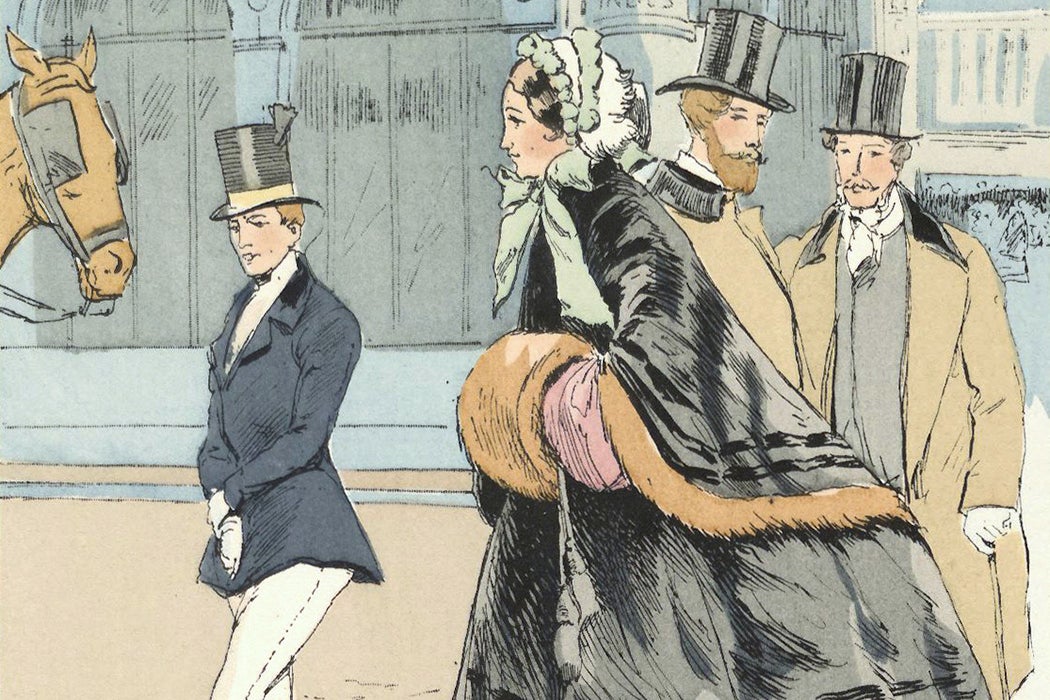In the late nineteenth century, new consumer cultures were taking shape in Western Europe and the United States, giving middle- and upper-class women new reasons to be out and about in urban public spaces. As historian Judith R. Walkowitz writes, in London’s West End, this change brought new kinds of trouble in the form of street harassment.
At this time, Walkowitz writes, the West End had become an economic, political, and commercial hub, where the wealthy mixed with middle-class clerks and civil servants, as well as working-class servants and sex workers. To some, the very status of women as shoppers in this heterogeneous neighborhood made them fair game for “street impertinences.” In letters to the popular Pall Mall Gazette, women described “so-called gentlemen” who stared at them, followed them, blocked their paths, and spoke to them “in a most hateful manner.” The writers explained that the police were of little help. One asked a policeman why he didn’t “clear these men away who prowl about the streets and squares.” His response, according to the letter, was “these are the gentlemen who live in the big houses about here: what do you think my place would be worth if I interfered with them.”
The blurring of class boundaries in the district confused the question of which women men felt free to “annoy.” Sex workers might dress in fancy clothes, and respectable upper-class women were sometimes accused of streetwalking. An 1865 lithograph captures the confusion, showing a clergyman approaching a well-dressed woman, who explains “You’re mistaken. I am not a social evil, I am only waiting for a bus.”
In 1887, after covering the issue of harassment for some time, the Pall Mall Gazette ran a column of responses entitled “What the ‘Male Pests’ Have to Say for Themselves.” Some insisted on their freedom to follow and speak to women. As one wrote, unless England were to follow the practice of “locking up women as they do in the East, there is nothing [left] but to leave men perfectly free to gaze at and even follow women as they please.” Others criticized the “respectable” women who wrote in for assuming that no morally upright woman would want to be “spoken to”—with at least one suggesting that they were misunderstanding courtship practices among working-class men and women who hold their “evening parties in the street.”
Weekly Newsletter
“The girls who really feel insulted by strangers addressing them in the streets are, in general, only ladies, and the ‘insult’ often consists, not so much in what is said, as in being taken to belong to a lower class of girls, who welcome such self-introduction,” the respondent claimed.
In fact, Walkowitz notes, there’s little record of what working-class women thought about these issues. Overall, though, it’s hard to miss how much patterns of street harassment match the ones we still see a century and a half later.







